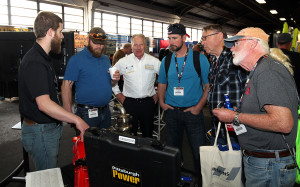 The Mid-America Trucking Show in Louisville, KY is now behind us. The weather was terrible, with snow, rain and cold temperatures, but that did not stop the owner operators and company drivers that were outside with their rigs from putting on a great show. The show trucks were beautiful – every year they just get better. It makes me proud that I have spent my entire adult career in the trucking industry. During the early 1970s I was a judge for ISCA (International Show Car Association) out of St. Clair Shores, Michigan, and worked the hot rod and custom car shows at Cobo Hall in Detroit, Cleveland, Erie and Pittsburgh. But, I must say, the judges for the show trucks at Louisville and Dallas each year have a much more difficult job judging these trucks than I ever did judging street rods!
The Mid-America Trucking Show in Louisville, KY is now behind us. The weather was terrible, with snow, rain and cold temperatures, but that did not stop the owner operators and company drivers that were outside with their rigs from putting on a great show. The show trucks were beautiful – every year they just get better. It makes me proud that I have spent my entire adult career in the trucking industry. During the early 1970s I was a judge for ISCA (International Show Car Association) out of St. Clair Shores, Michigan, and worked the hot rod and custom car shows at Cobo Hall in Detroit, Cleveland, Erie and Pittsburgh. But, I must say, the judges for the show trucks at Louisville and Dallas each year have a much more difficult job judging these trucks than I ever did judging street rods!
Our booth in the West Wing was packed with owner operators, many of them interested in our “Dorothy” soot separator, one of our newest inventions that removes the soot from the EGR gases before they enter the intake manifold. With the added bonus of also reducing the diesel exhaust fluid (DEF) consumption by as much as 30%, the “Dorothy” soot eater is a winner.
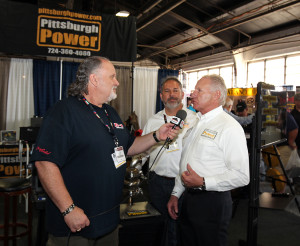 The Louisville truck show is like a family reunion for us, as we get to see many of the same people every year and hear about how happy they are with how their truck is running, using our parts and programing. The camaraderie and friendship we share in this industry is second to none. I would like to thank everyone who came by our booth this year and invite them to join us again next year. Louisville is always an amazing and beneficial trucking event.
The Louisville truck show is like a family reunion for us, as we get to see many of the same people every year and hear about how happy they are with how their truck is running, using our parts and programing. The camaraderie and friendship we share in this industry is second to none. I would like to thank everyone who came by our booth this year and invite them to join us again next year. Louisville is always an amazing and beneficial trucking event.
Now, let’s talk about engine rebuilding. Many times each day I get the phone call where someone asks how much it will cost to rebuild their engine. To that question, I always follow-up with a question of my own and ask them, “What engine do you have?” There are many owner operators out there that do not know the model of the engine they own and drive. With a Caterpillar, we need to know if it’s a 5EK, 1LW, 2WS, 6NZ, MXS, etc. If you have a Detroit 60 Series, your models will be either a DD3, DD4, DD5, DD6 or DD15. If you have a Cummins, is it a Big Cam and, if so, what is the CPL (445, 625, 1280, 1844, 2025, etc)? If your Cummins is an ISX, you will need to know the CPL, the engine serial number and the year of the truck.
Please take the time to find out exactly what engine you have and the engine’s serial number, as this is a must when it comes to ordering parts. Write these numbers down and keep them in the truck. If you need to, put a sticky note where you will see it often that spells out your engine’s make, model and serial number. Telling us you have a 60 Series or a C-15 Cat is not enough information.
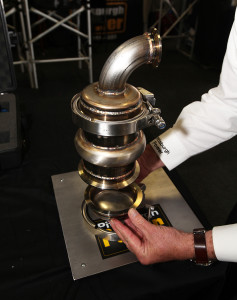 So, back to that question we get about the cost of rebuilding an engine. Let’s talk about the pricing, and why it costs so much to rebuild an engine the PROPER way. A basic rebuild on a DD3 or DD4 Detroit can be as low as $16,000. This doesn’t get you very much: new liners and pistons, rod and main bearings, a reman head, 6 reman injectors, new head bolts, a head gasket and pan gasket set, oil and filters, and new antifreeze. If the engine is a 430/470 or 500 horsepower model, that is still considered to be a bone-stock engine.
So, back to that question we get about the cost of rebuilding an engine. Let’s talk about the pricing, and why it costs so much to rebuild an engine the PROPER way. A basic rebuild on a DD3 or DD4 Detroit can be as low as $16,000. This doesn’t get you very much: new liners and pistons, rod and main bearings, a reman head, 6 reman injectors, new head bolts, a head gasket and pan gasket set, oil and filters, and new antifreeze. If the engine is a 430/470 or 500 horsepower model, that is still considered to be a bone-stock engine.
To make this stock DD3 or DD4 a great engine, we have to do a few extra things to it, like: cut the upper counter bores to set the liner protrusion ($800); balance the connecting rods and pistons ($850); install a ported and ceramic-coated exhaust manifold to decrease the exhaust temperature by 125 degrees and gain a quarter mpg ($1,450); add a 15% larger turbocharger to gain another quarter mpg or more, lower the exhaust gas temperatures, allow the engine to run free and pull better ($1,150); replace the torsional damper and mercury-filled engine balancer ($625); install a performance program and clean and test the inside of the ECM ($1,425); install a FASS fuel system ($1,600); replace the bull gear ($1,200); add a by-pass oil filter ($675); replace the stock air filter with a Fleet-Air filter ($425); and replace the stock muffler with one of our performance mufflers ($185). That, my friends, comes out to $10,385 in extras to build a great-running engine that will outlive the stock engine, gain at least 1 more mile-per-gallon, and be a whole lot more fun to drive.
If you were diligent about maintaining the engine before this rebuild, changed the torsional damper at 500,000 miles, and already had the ported and ceramic-coated exhaust manifold, the larger turbo and performance muffler, the Fleet-Air filter and OPS by-pass oil filter, than these parts can all be reused at the time of the rebuild, thus bringing the price way back down towards the basic price. That is one of the many reasons we encourage you to invest in the engine as you go, while it’s still running – the additional fuel mileage savings alone will pay for the rebuild in no time at all.
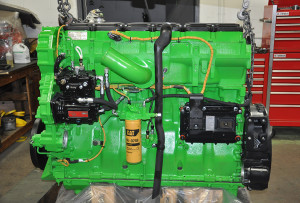 For a single turbo Caterpillar, here is the pricing breakdown to do it right. The Platinum rebuild kit, which happens to be the best rebuild kit of all the engine manufacturers, is $12,584. Then, add to that about $6,000 in labor, and you have $18,584 for a basic rebuild. But, please realize this: it is almost impossible to do it for that price, because there are hundreds of small parts that do not come with the rebuild kit that you will probably need (at least some of them). The reason I’m telling you this is because when you call a truck dealership or basic truck shop, this is what you will get quoted. Once the engine is disassembled, the engine block is cleaned, and the main bearings are checked to make sure the line bore is straight, then we will know if the engine can stay in the chassis for the rebuild or not.
For a single turbo Caterpillar, here is the pricing breakdown to do it right. The Platinum rebuild kit, which happens to be the best rebuild kit of all the engine manufacturers, is $12,584. Then, add to that about $6,000 in labor, and you have $18,584 for a basic rebuild. But, please realize this: it is almost impossible to do it for that price, because there are hundreds of small parts that do not come with the rebuild kit that you will probably need (at least some of them). The reason I’m telling you this is because when you call a truck dealership or basic truck shop, this is what you will get quoted. Once the engine is disassembled, the engine block is cleaned, and the main bearings are checked to make sure the line bore is straight, then we will know if the engine can stay in the chassis for the rebuild or not.
On a Caterpillar rebuild, the cylinder packs MUST be taken apart, as this is the only way the mechanic can set the liners in the block, install the spacer plate and gasket, and install the specialty tool to hold the liners in place so the liner protrusion can be checked. If this important step is not performed, how are you going to know the liner protrusion? If the mechanic installs the cylinder packs and then checks the liner protrusion and it’s low, which it always is, now he has to un-torque the connecting rods from the crankshaft (the crush of the rod bearings where the two halves meet is now lost), remove the cylinder pack, and try to find out why the protrusion is low. It’s so much easier to work with just the liner to check for liner protrusion.
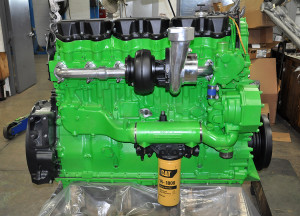 Does it take longer to build an engine the Pittsburgh Power way? Yes sir – about 12 hours of labor longer. Now is the time for these two old sayings: “Why is there never time to do it right the first time, but there is always time to do it over,” and, “The bitterness of poor quality remains long after the sweetness of a low price is forgotten.” I recently had a phone call from a small trucking company in Mississippi that just had their Acert Cat rebuilt and the head gasket blows on every trip. They have replaced the head gasket eight times and wanted to know what the problem was. The answer is simple: the rebuilding mechanic DID NOT set the liner protrusion correctly.
Does it take longer to build an engine the Pittsburgh Power way? Yes sir – about 12 hours of labor longer. Now is the time for these two old sayings: “Why is there never time to do it right the first time, but there is always time to do it over,” and, “The bitterness of poor quality remains long after the sweetness of a low price is forgotten.” I recently had a phone call from a small trucking company in Mississippi that just had their Acert Cat rebuilt and the head gasket blows on every trip. They have replaced the head gasket eight times and wanted to know what the problem was. The answer is simple: the rebuilding mechanic DID NOT set the liner protrusion correctly.
The following is a list of the performance parts and services needed (and prices) to build a great-performing, long-lasting and fuel-efficient Cat engine: Pittsburgh Power ported and ceramic-coated manifold ($1,650); HP Cat turbocharger ($2,450); ECM performance tuning ($1,450); balancing the connecting rods and pistons ($850); new torsional damper and mercury-filled balancer ($765); install a FASS fuel system with all the hoses and fittings ($1,600); an OPS by-pass oil filtration system installed ($1,165 with electrics or $695 without); (2) Fleet-Air filters ($598); and cutting of the upper counter bores ($800). The total for all these parts and services, that will make your Caterpillar a great engine, in addition to the $18,584 for the basic rebuild already mentioned, is an extra $11,328.
As you can see, it’s much easier to add these “extra” parts to your existing engine as you go along. Then, when it is time to do a rebuild, you will not have to spend as much, because many of these parts will be reusable on the rebuilt engine, making the rebuild a lot more affordable. Carl Kellner added $12,000 to his 2WS Cat in a 1999 Pete 379, and in one year he saved $35,000 in fuel alone! Now can you see the value of rebuilding your motor properly? I hope so!! If you want to rebuild your engine the right way or begin adding and/or replacing these additional parts, give us a call at Pittsburgh Power in Saxonburg, PA at (724) 360-4080 or visit www.pittsburghpower.com today. I promise, we won’t steer you wrong!
